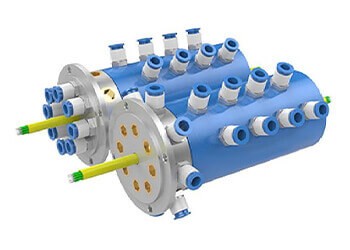Navigating Global Commerce: Understanding the Harmonized System Code for Seamless Slip Ring Trade.
In today’s interconnected world, international trade plays a vital role in the global economy. For businesses engaged in the import and export of electrical slip rings, understanding the Harmonized System (HS) code is crucial. The HS code serves as a universal language for customs authorities and traders, enabling seamless trade across borders. Join us as we delve into the world of trade secrets and decode the HS code for electrical slip rings, unraveling the mysteries of global commerce.
The Harmonized System is an internationally recognized classification system developed by the World Customs Organization (WCO). It assigns a unique HS code to each product, facilitating the uniform classification of goods traded worldwide. The HS code is composed of a series of digits that provide specific information about the product, its characteristics, and its origin.
When it comes to electrical slip rings, the HS code falls under the category of electrical machinery and equipment. Specifically, slip rings are classified within Chapter 85 of the Harmonized System, which pertains to electrical machinery and equipment and parts thereof. More precisely, slip rings can be classified under HS code 8536.50.
HS code 8536.50 specifically covers electrical slip rings for electrical machines or apparatus. This code encompasses slip rings designed to transmit electrical signals or power in rotating systems. It includes slip rings used in various industries, such as robotics, wind turbines, medical equipment, and aerospace applications. By assigning a unique HS code, customs authorities worldwide can identify and categorize electrical slip rings accurately.
Understanding the HS code for electrical slip rings is essential for businesses involved in international trade. The code serves as a reference point for customs declarations, import and export documentation, and duty calculation. Traders must accurately classify their slip rings using the correct HS code to ensure compliance with customs regulations and avoid delays or penalties.
When importing or exporting electrical slip rings, businesses must provide the HS code (8536.50) on their customs declarations and invoices. This code allows customs authorities to identify the product category and apply the appropriate tariffs and duties. Proper classification under the correct HS code ensures a smooth customs clearance process and minimizes the risk of errors or disputes.
It is worth noting that while the HS code provides a general classification framework, additional subcategories or specifications may exist for specific types of electrical slip rings. Depending on the characteristics or intended use of the slip rings, further classification may be required. Traders should consult with customs authorities or seek professional advice to ensure accurate classification under the appropriate subcategories, if applicable.
The HS code for electrical slip rings not only facilitates international trade but also enables the collection and analysis of trade data. Customs authorities and organizations utilize this data to track trade flows, monitor market trends, and develop trade policies. It also aids in the compilation of trade statistics, allowing governments and businesses to assess the economic impact of slip ring trade and identify emerging markets or potential opportunities.
As technology evolves and slip ring applications diversify, the HS code remains a crucial tool in navigating the complexities of global commerce. It provides a standardized language that transcends borders and ensures a smooth flow of trade for businesses involved in slip ring import and export.
In conclusion, understanding the HS code for electrical slip rings is paramount for businesses engaged in international trade. By accurately classifying slip rings under HS code 8536.50, traders can navigate customs procedures with ease and comply with import and export regulations. The HS code serves as a universal language, unlocking the doors of global commerce and facilitating seamless trade in the world of electrical slip rings.
See What We Can Do

